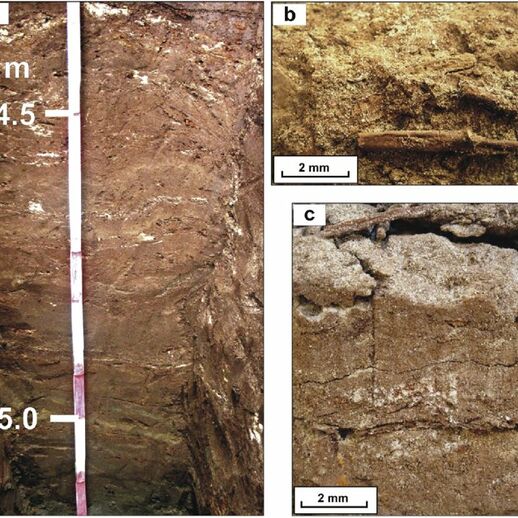Gyttja
Gyttja is a type of soil formed in nutrient rich water under aerobic conditions. Gyttja is made up from decomposed plants and animals. It is defined as fine-textured, plastic, often gelatinous material when wet but becomes hard when dry, as the material shrinks and cracks along horizontal planes. In thin sections, the organic materials in gyttja are yellow. Gyttja can contain traces of calcium carbonate. Gyttja deposits can be found in floodplains, fans and deltas of rivers and streams.
Classification
Gyttja is a coprogenous deposit formed by animals on and within lake bottom. It is a mixture of fragments of plants, diatom frustules, quartz and mica grains, siliceous spicules of Spongilla and several types of insect and crustacean exoskeletons together with pollen and cryptogam spores.[1]
Characteristics
In a fresh stat it is very soft and hydrous with a dark greenish-grey or black color, but never brown. In a dry state some gyttjas are hard and black, others are more friable and more nearly pale yellow-grey, depending on the main constituent. The organic component of gyttja is <50%.[1]
